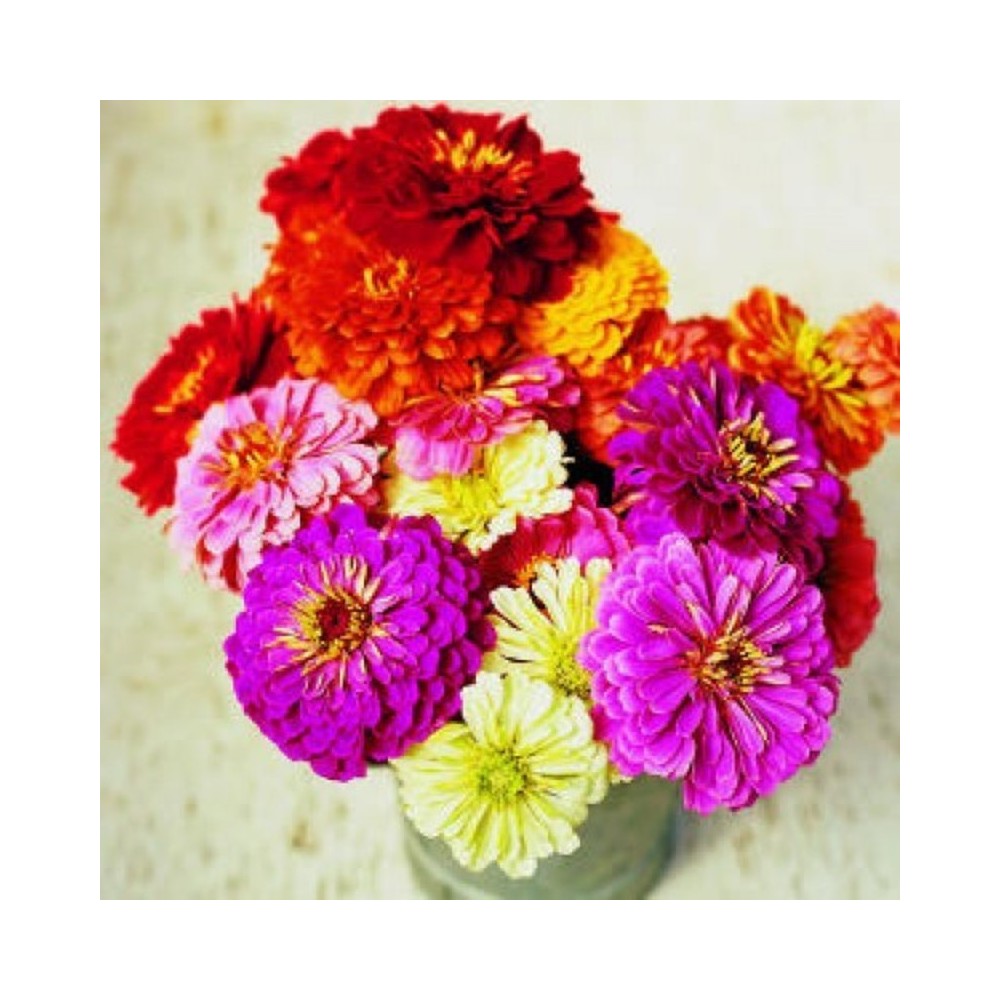



Zinnia flowers are one of the easiest plants grow, grow quickly, and bloom heavily. They make a massive burst of color in your garden, and they attract butterflies.

Security policy visit http://nurserynature.com/content/10-security-policy

Shipping & Delivery Policy visit http://nurserynature.com/content/1-delivery

Cancellation & Refund Policy visit http://nurserynature.com/content/6-aeu-legal-revocation-terms
Zinnia flowers are one of the easiest plants grow, grow quickly, and bloom heavily. They make a massive burst of color in your garden, and they attract butterflies.
Zinnias are annuals, so they grow for one season and make great cutting flowers. They have bright, solitary, daisy-like flowerheads on a single, erect stem. The most common zinnia is “dahlia-flowered” and grows up to three feet. Other types are “cactus-flowered.”
Use in an annual or mixed border. Smaller zinnias are suitable for edging, windowboxes or other containers. The narrow-leaf zinnia also works well in hanging baskets.
Zinnia Planting & Care
· Zinnias are grown from seed; they grow very quickly in the right conditions. Zinnias do not like to be transplanted.
· Full sun is essential with a minimum daylight temperature of 60 degrees F.
· Zinnias are adaptable but prefer fertile, humus-rich, well drained soil at pH preference 5.5 - 7.5.
· If soil is amended with compost, the flowers will grow more quickly.
· Sow seeds ¼-inch deep.
· Space plants 4 to 24 inches apart depending on variety. (Many common varieties are 6 inches within the row and 2 feet in between rows.) See back of seed package.
· Germination occurs at 74 to 80 degrees F in 5 to 76 days.
· Sow in succession for a longer flowering display.
· Deadhead to prolong flowering.
· Maintain moderate soil moisture and fertilize lightly.
· Zinnias will die with the first frost.
Bacterial and fungal spots, powdery mildew, bacterial wilt. Minimize wetting of foliage to avoid disease.
Caterpillars, mealybugs, and spider mites also cause problems. Avoid spraying and tolerate some leaf damage unless the situation is uncontrolled.
Luckily, zinnias are deer-resistant, so they might help keep nearby flowers from being eaten.